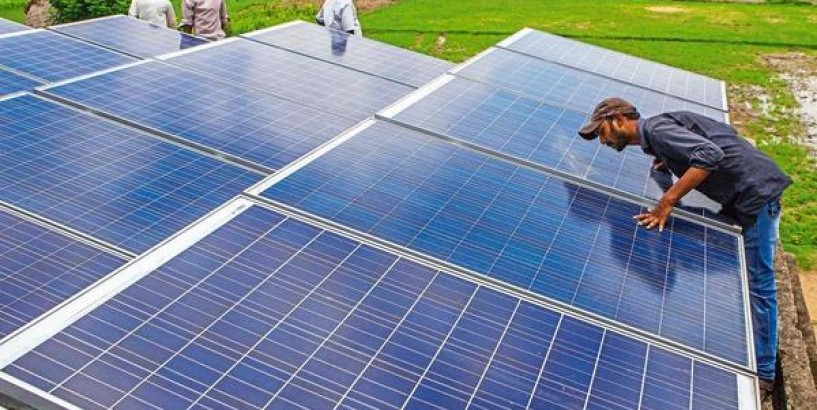NEW DELHI: The Union government may raise tariffs on imports of green energy equipment in a bid to boost their local manufacturing and protect domestic companies from cheaper imports, said Anand Kumar, secretary in the ministry of new and renewable energy ( MNRE ).
The fast-growing domestic market for solar components is dominated by Chinese companies due to their competitive pricing. The surge in imports led the National Democratic Alliance (NDA) government in its previous term to impose a safeguard duty from 30 July 2018 on solar cells and modules imported from China and Malaysia.
Going forward, more tariff barriers may be introduced for components such as glass, solar cells and gear boxes. India is also putting the final shape on a plan to build Tesla-style giga factories to manufacture batteries that involves raft of incentives such as concessional financing options, friendly tax regimes and a suitable basic customs duty safeguard.
Speaking at a conference in New Delhi, MNRE secretary Kumar said India has come up with tariff and non-tariff barriers and going forward, only Bureau of Indian Standards (BIS) and MNRE approved solar-cell modules will be permitted. This will help in maintaining quality and avoiding the use of low quality imported solar equipment by developers.
Mint reported on 7 September 2017 about poor quality Chinese solar modules — rejected by developers—being sold in the domestic market at a discount. Modules account for nearly 60% of a solar power project’s total cost.
This comes at a time when India’s emerging green economy is expected to require investments of around $80 billion till 2022, growing more than threefold to $250 billion during 2023-30. India has become one of the top renewable producers globally with ambitious capacity expansion plans.
“Once we have a tariff barrier, everyone who manufactures here gets an advantage," said Raj Kuma Singh, Union minister for power and new and renewable energy at the conference. “The tariff barriers can’t be so high to allow someone to make undue high profits."
India currently has a domestic manufacturing capacity of 3 gigawatts (GW) for solar cells and that of around 10GW for wind power equipment.
Anand Kumar said India’s manufacturing capacity is insufficient and there is a need to ramp it up to meet domestic demand as well as exports.
The Union budget in July also announced tax breaks for setting up mega-manufacturing plants for solar photovoltaic cells, lithium storage batteries and solar electric charging infrastructure.
Kumar added that India’s plans to enhance manufacturing in newer areas such as battery storage and a new policy is in the works. “We are looking at creating demand for storage for grid balance," he said.
However, some concerns have emerged on the green energy space with Y.S. Jagan Mohan Reddy-led Andhra Pradesh government’s controversial plan to reopen power purchase agreements (PPAs) inked under the previous N. Chandrababu Naidu administration. In an attempt to defuse the brewing legal crisis in Andhra Pradesh that may derail India’s clean energy run, Union power minister Singh had written to the state government citing a danger of erosion of investor confidence.









